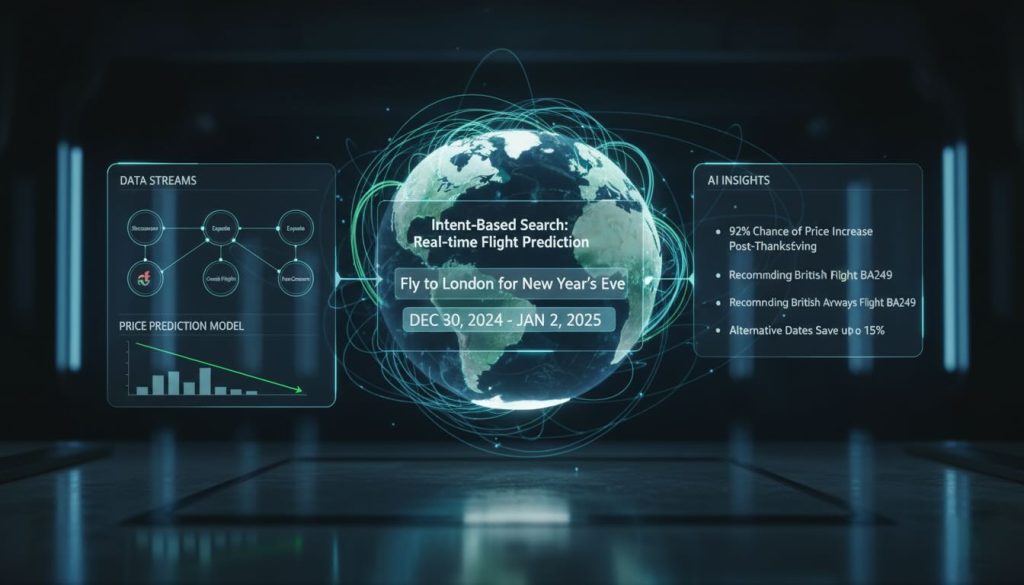When you type a few words into Google and hit Search, the response feels magical lightning-fast, smooth, and effortless. But behind that click lies one of the most astonishing technological feats on Earth. Every time you search, over 1,000 computers wake up in harmony, performing millions of calculations in just 0.2 seconds to bring you the most relevant answers possible.
That instant result isn’t luck. It’s the product of decades of innovation in data engineering, machine learning, distributed computing, and AI orchestration all running silently across Google’s vast global network of data centers. What feels like one search is actually a massive, coordinated digital symphony involving machines scattered across continents.
The Hidden Orchestra of Machines
Let’s start with what really happens the moment you press “Enter.”
As your request leaves your device, it doesn’t go straight to one Google server. Instead, it gets routed through multiple load balancers that determine the nearest and least busy data center. Think of these as air-traffic controllers for your search deciding which cluster of servers will handle your query fastest.
Inside that chosen data center, your query gets broken into micro-tasks, each processed by different server clusters. One machine handles ranking, another predicts intent, a third evaluates language models, and dozens more handle indexing, security, and personalization. In less than the blink of an eye, these computers exchange information across ultra-fast fiber-optic networks, each performing its part before combining results into the single list of answers you see on your screen.

Why 1,000 Computers?
You might wonder why so many machines for one tiny search? The answer lies in parallel processing.
Google’s search engine works like a digital brain composed of billions of neurons (servers). Each neuron specializes in something: understanding your words, locating the right web pages, checking for freshness, filtering spam, and ranking by relevance.
If one computer tried to handle everything, the delay would be unbearable. But when thousands of machines share the load, every fraction of a task happens simultaneously. This is what engineers call massively parallel computing, a cornerstone of Google’s architecture.
In essence, Google isn’t just one computer it’s a planet-sized supercomputer, continuously humming to deliver answers faster than you can blink.
A Peek Inside Google’s Data Centers
Imagine a warehouse the size of ten football fields, filled with row after row of machines glowing with blue and green lights. These are Google’s data centers, located in places like Iowa, Oregon, Finland, and Singapore.
Each one is meticulously optimized for performance and energy efficiency. Thousands of servers are cooled by recycled water or advanced liquid systems to prevent overheating. Even the airflow is algorithmically controlled.
Every data center connects to Google’s global fiber backbone, which transfers information between continents faster than most home internet connections can transfer between rooms. These aren’t just computers they’re the backbone of the modern internet.
How Google Predicts What You Mean
Search isn’t just about matching words it’s about understanding meaning.
When you type “best laptop for students,” Google’s AI doesn’t just look for those words. It tries to understand why you’re searching. Are you looking for budget options, performance reviews, or battery life?
To do that, Google uses a blend of language models, ranking systems, and semantic networks that interpret context. These systems rely on the same deep learning principles that power ChatGPT or Gemini, but applied on a massive, real-time scale.
Every word you type triggers predictive models that weigh hundreds of ranking signals page speed, authority, freshness, location, intent and calculate which result will most likely satisfy your curiosity.
The 0.2-Second Race
That magical 0.2 seconds is not just about computing power it’s also about optimization.
Google engineers have spent decades fine-tuning the process to remove milliseconds wherever possible. They design custom chips (TPUs) for AI inference, use caching layers to store popular queries, and even analyze network latency down to microseconds.
In simple terms, if two servers perform equally well but one is a few milliseconds faster, Google automatically reroutes millions of searches to the faster one. That’s how it maintains consistency across billions of daily queries.

Flight Booking Example: How Context Works
Let’s say you type: “book a flight from New York to Los Angeles next week.”
Here’s what happens under the hood:
- Google’s search AI recognizes “book a flight” as a travel intent.
- It triggers a specialized context protocol that prioritizes airline websites, Google Flights, and travel aggregators.
- It predicts your preferred dates by analyzing the phrase “next week.”
- A ranking model scores pages based on availability, pricing, user reviews, and reliability.
- Within milliseconds, you get a neatly curated list of results tailored to your likely intent.
That’s not just search it’s real-time intent interpretation.
The Energy Behind Every Query
Every search consumes energy about 0.3 watt-hours per query on average. That might sound tiny, but across billions of daily searches, it adds up.
To offset this, Google has built one of the world’s largest renewable energy portfolios. Many data centers now run on solar, wind, and hydro power, aiming for carbon-free operations 24/7 by 2030.
So, every time you search, you’re not just tapping into computing power you’re engaging with one of the most energy-efficient infrastructures ever created.
The Evolution of Search Power
Google didn’t always have this massive network. Back in 1998, it ran on just two servers built by Larry Page and Sergey Brin in a Stanford dorm room.
Fast forward to today, and it operates over a million servers, processing over 8.5 billion searches per day.
Modern Google Search combines AI-driven ranking, user personalization, and live data from across the web to deliver what you see as a single unified result. It’s not just about finding pages it’s about predicting what you’ll find most valuable.
The Human Touch in AI Systems
Even with all the automation, human judgment remains central. Engineers constantly refine algorithms to balance speed with quality, ensuring misinformation, spam, or unsafe content doesn’t slip through.
Thousands of quality raters worldwide evaluate results using E-E-A-T guidelines (Experience, Expertise, Authoritativeness, Trustworthiness) to ensure your search results stay reliable and useful.
In short, behind every query, there’s still a little bit of human intelligence guiding the machine’s choices.
| Insight | Why It Matters | Application | Tags |
|---|---|---|---|
| Each Google search activates over 1,000 powerful computers working together. | Shows how distributed computing powers instant results. | Helps users understand what happens behind a simple search. | Google Search, Data Centers, Distributed Computing, Cloud, AI, Algorithms, Internet |

The Bigger Picture:
The next time you open Google and type a simple question, remember that you’re engaging one of the largest synchronized systems in history. Your search doesn’t just go to one computer it activates a network of over a thousand machines, each working in perfect rhythm to understand you, anticipate your needs, and deliver exactly what you want in less than a heartbeat.
This process blends AI, data science, distributed computing, and renewable energy engineering, creating a masterpiece of modern technology. From predicting travel itineraries to answering complex medical queries, every click contributes to the collective intelligence that fuels the digital age.
Understanding this system isn’t just fascinating it’s the foundation for the next generation of AI-integrated search, personalized learning, and real-time decision making.
#GoogleSearch #ArtificialIntelligence #DataCenters #TechExplained #SearchEngine #MachineLearning #CyberTechnology #AIEducation #Innovation #FutureOfSearch #TechFacts #ComputingPower #GoogleAI #CloudInfrastructure





0 Responses
No responses yet. Be the first to comment!